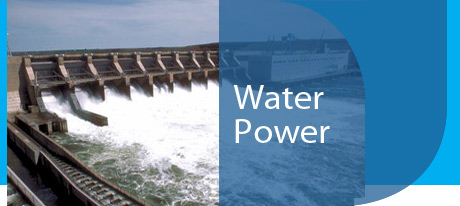
The Water Power Act Licensing program is responsible for two important sub-program areas with the most high profile of which pertains to the licensing (or re-licensing) of new and existing hydroelectric power stations and other structures related to water power generation. Currently there are 18 water power projects that have been licensed either at the Interim or Final stage. Some of these projects were first licensed over 50 years ago. The licensing process continues to react to evolving societal expectations regarding issues of stewardship of the resource and equity issues for both locally impacted residents and Manitobans as a whole.
The other sub-program area is concerned with the disposition of applications to develop Crown land parcels located within the Water Power Licensed areas and/or Water Power Reserves. Although these projects are dealt with in a short time frame compared to the licensing of water power related structures they are of great importance to the applicants who may wish to build a dock or cabin, for example, within a licensed area or reserve.
The Manitoba Water Power Act and Regulation provides authority for Manitoba to:
- Allocate provincial water powers
- Allocate Crown lands required in connection with the development of the said water powers
- Authorize the construction of all undertakings ( dams, dykes, spillways, powerhouses, etc.) with respect to the water power development
- Regulate all power and energy produced, and
- Authorize all incidental matters as required by the project (e.g. roads, living quarters, service buildings, fencing, airstrips, etc.)
The Water Power Act
Water Power licensing is one of the oldest forms of natural resource licensing in existence in Manitoba. The Manitoba Water Power Act and Regulations (The WPA) came into existence in 1930 as a result of the passage of the Natural Resource Transfer Act (the NRTA). The origins of the program can be traced even further back to the passage of the federal Dominion Water Power Act of the early 1900's. The objective of water power licensing is to provide for the sustainable allocation of the province's water power resources. The Manitoba Water Power Act provides the authority for the province to administer the hydraulic resources of the province for the benefit of all Manitobans. The water power, including the Crown lands required to develop the resource are vested in the provincial Crown by this legislation. The WPA envisaged that there could be competing interests to develop the resource and the WPA provides a scheme by which the province may consider and subsequently licence its use. The process is outlined at length in the Regulations.
Water Power Regulation
The Regulations (there are over 90 sections) provides for a detailed outline of the procedures a proponent must follow upon applying for a water power licence for a proposed hydro development. The information submitted must be sufficient to allow the Department to determine if the project is of suitable design, feasible, the most beneficial use of the resource and is in the public interest. The Regulation also provides for the assessment and collection of rentals for water and Crown lands used in connection with the production of hydro power.
Crown Lands Withdrawn from Disposal Regulation (542/ 88R)
The Crown Lands Withdrawn from Disposal Regulation establishes Water Power Reserves to set apart Crown lands for the purpose of water power in Manitoba and withdraw them from disposal under The Crown Lands Act, or any other Act. These lands are not surveyed and are defined by Section, Township and Range.
- Regulations under The Water Power Act
- The Water Power Act
- Water Power Regulation (25/ 88R)
- Crown Lands Withdrawn from Disposal Regulation (542/ 88R)
Projects Licensed Under the Water Power Act
- Churchill River Diversion
- Lake Winnipeg Regulation
- Grand Rapids Generating Station
- Great Falls Generating Station
- Jenpeg Generating Station
- Keeyask Generating Station
- Kelsey Generating Station
- Kettle Generating Station
- Laurie River I Generating Station
- Laurie River II Generating Station
- Limestone Generating Station
- Long Spruce Generating Station
- McArthur Falls Generating Station
- Pine Falls Generating Station
- Pointe du Bois Generating Station
- Seven Sisters Generating Station
- Slave Falls Generating Station
- Wuskwatim Generating Station
General Compliance Related Documents
- CAMP Expansion and Missi Falls Study Progress Reports
- Manitoba letter request for Bi-monthly Progress Reports - July 15, 2024
- Annual Indigenous Engagement Reports
- Annual Hydraulic Flows and Levels Reports
Email or call us at:
204-945-6784
1-800-214-6497
- CAMP Expansion and Missi Falls Study Progress Reports
- Annual Indigenous Engagement, and Public Safety, Shoreline Stabilization and Debris Management Reports
- Annual Hydraulic Flows and Levels Reports
- Projects Licenced Under the Water Power Act
- Hydroelectric Settlement Agreements
- Coordinated Aquatic Monitoring Program
- Regional Cumulative Effects Assessment


